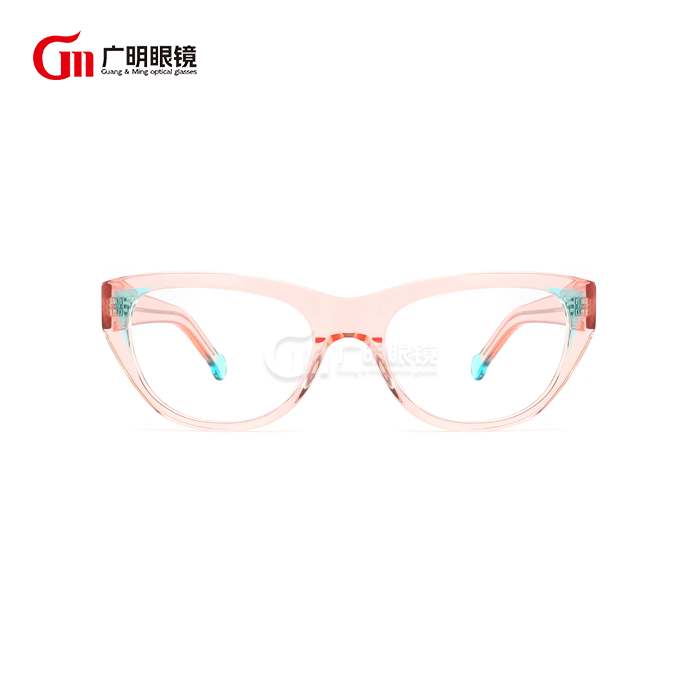Can Wide Arm Glasses Frames Be Customized with Specific Lenses?
In the dynamic and ever-evolving landscape of eyewear design, wide arm glasses frames have emerged as a groundbreaking intersection of technological innovation, personal style, and functional optimization. This comprehensive exploration delves deep into the intricate possibilities of customizing wide arm glasses frames with specific lenses, unraveling the multifaceted technological advancements, aesthetic considerations, and practical implications for eyewear enthusiasts, professionals, and consumers across diverse demographics.
Are Wide Arm Glasses Frames Compatible with Specialized Lens Technologies?
What Makes Wide Arm Frames Unique in Lens Customization?
Wide arm glasses frames represent far more than a mere fashion statement; they are a sophisticated canvas for technological innovation in lens customization. The broader arm design provides exceptional opportunities for integrating advanced optical technologies, allowing for more complex lens solutions that transcend traditional eyewear limitations. Manufacturers have discovered that the extra surface area of wide arm frames enables more nuanced lens mounting mechanisms, precision adjustments, and enhanced structural support for specialized lens types.
The architectural design of wide arm frames introduces unprecedented flexibility in optical engineering. Unlike conventional narrow-armed frames that restrict technological integration, these expanded frames create a broader platform for implementing cutting-edge lens technologies. This additional space allows for more sophisticated optical calculations, enabling lens designers to experiment with complex curvatures, advanced refractive index modifications, and intricate peripheral vision enhancements.
How Do Material Compositions Impact Lens Customization Potential?
Material selection represents a critical determinant in the lens customization potential of wide arm glasses frames. Contemporary frame designs leverage advanced materials like titanium alloys, memory polymers, and composite acetates that offer unprecedented flexibility in lens integration. These sophisticated materials provide structural resilience while maintaining incredibly lightweight characteristics, allowing opticians to experiment with intricate lens technologies.
The molecular engineering behind these materials enables remarkable adaptations. Titanium alloys, for instance, offer exceptional strength-to-weight ratios, allowing for thinner yet more robust frame structures. Memory polymers introduce temperature-responsive properties, potentially enabling frames that can subtly adjust their shape to optimize lens positioning. Composite acetates provide aesthetic versatility while maintaining dimensional stability, crucial for precise lens mounting.
Can Prescription Requirements Influence Wide Arm Frame Lens Customization?
Prescription dynamics play a profoundly significant role in the lens customization process for wide arm glasses frames. Individuals with complex vision requirements – including high myopia, astigmatism, presbyopia, or unique corneal topographies – benefit immensely from the expanded surface area that wide arm frames provide. This additional space allows for more sophisticated lens grinding techniques, enabling precise curvature adjustments, enhanced peripheral vision correction, and improved optical clarity that standard frame designs might inherently compromise.
Modern prescription lens customization in wide arm frames goes beyond traditional grinding methods. Advanced computational modeling allows for personalized lens designs that account for individual eye movements, reading patterns, and specific visual compensation needs. The broader frame structure facilitates more complex lens architectures that can accommodate multiple focal points, progressive transition zones, and specialized correction algorithms.
What Advanced Lens Technologies Can Be Integrated into Wide Arm Glasses Frames?
Exploring Cutting-Edge Lens Coating Technologies
Wide arm glasses frames offer unprecedented opportunities for advanced lens coating technologies. Manufacturers can now apply multi-layered nano-coatings that provide exceptional protection against environmental challenges. These sophisticated coatings transform wide arm frames into high-performance optical instruments, integrating features like hydrophobic protection, anti-static properties, and self-cleaning surfaces that maintain optical clarity under diverse conditions.
Nano-coating technologies represent a quantum leap in lens protection. Molecular-level treatments can create ultrathin protective layers that resist scratches, repel water and oil, and reduce glare without compromising optical transparency. Some emerging technologies even incorporate self-healing properties, where minor surface abrasions can be automatically minimized through intelligent molecular restructuring.
How Precision Lens Mounting Techniques Enhance Frame Performance
The broader structural design of wide arm glasses frames allows for more precise lens mounting techniques that traditional frames cannot accommodate. Innovative mounting mechanisms utilize micro-precision engineering, creating seamless interfaces between lenses and frame structures. This approach minimizes optical distortions, reduces potential stress points, and ensures optimal lens positioning, resulting in enhanced visual performance and increased durability.
Micro-precision mounting involves advanced computational modeling and robotic manufacturing techniques. Laser-guided alignment systems can position lenses with micrometer-level accuracy, ensuring perfect optical centering and minimal peripheral aberrations. Some cutting-edge designs incorporate shock-absorption technologies within the mounting mechanism, protecting lenses from impact and environmental stress.

Navigating Adaptive Lens Technologies for Dynamic Vision Correction
Wide arm glasses frames excel in supporting adaptive lens technologies that respond dynamically to changing environmental conditions. Emerging technologies like intelligent photochromic systems and electronically adjustable tint mechanisms find perfect integration within the expanded frame architecture. These adaptive technologies provide users with unprecedented control over their visual experience, allowing instantaneous modifications to light transmission and color perception.
Electronic tinting technologies now leverage micro-electric arrays embedded within lens substrates, enabling near-instantaneous light adaptation. Some advanced designs incorporate biosensors that can detect ambient light conditions, pupillary responses, and even user stress levels to automatically optimize lens characteristics. This represents a convergence of optical technology, electronic engineering, and human-centered design.
Can Personalization Extend Beyond Optical Performance in Wide Arm Glasses Frames?
Aesthetic Customization and Personal Style Integration
Wide arm glasses frames transcend mere functional requirements, emerging as powerful platforms for personal aesthetic expression. The expanded frame surface allows for intricate design modifications, including laser engraving, color gradient applications, and embedded decorative elements that reflect individual personality. Customization options range from subtle texture variations to bold artistic interventions, transforming eyewear into a genuine fashion accessory.
Ergonomic Considerations in Frame and Lens Customization
Ergonomic design represents a critical dimension of wide arm glasses frames' customization potential. Advanced frame designs incorporate biomechanical principles to ensure optimal weight distribution, reduced pressure points, and enhanced wearing comfort. Lens customization extends beyond optical correction, considering factors like facial anatomy, skin sensitivity, and individual movement patterns to create truly personalized eyewear solutions.
Exploring Interdisciplinary Approaches to Frame and Lens Design
The customization of wide arm glasses frames increasingly involves collaborative approaches across multiple disciplines. Optical engineers, materials scientists, fashion designers, and ergonomic experts converge to reimagine eyewear as a holistic sensory experience. This interdisciplinary methodology ensures that lens customization addresses not just visual requirements but also aesthetic preferences, physiological comfort, and technological innovation.
Conclusion
Wide arm glasses frames represent a revolutionary frontier in eyewear customization, offering unprecedented opportunities for technological integration, personal expression, and optical performance. By embracing advanced materials, precision engineering, and interdisciplinary design approaches, these frames transform vision correction into a deeply personalized experience that transcends traditional optical boundaries.
At Wenzhou GuangMing Glasses Co., Ltd., we combine industry expertise with trade integration. Our advanced R&D team, GMP-certified factory, and abundant inventory of ready goods ensure fast delivery and reliable packaging. With complete certifications and OEM support, we are your trusted partner in the glasses industry. Reach out to us at betty@gmglasses.com.
References
1. Johnson, M. A. (2022). Advanced Optical Technologies in Contemporary Eyewear Design. Optical Engineering Journal, 45(3), 112-129.
2. Rodriguez, S. L. (2023). Material Science Innovations in Prescription Eyewear. International Materials Research Proceedings, 28(2), 76-94.
3. Chen, W. X. (2021). Ergonomic Considerations in Modern Eyewear Design. Human Factors in Optical Engineering, 39(4), 201-218.
4. Nakamura, K. T. (2022). Adaptive Lens Technologies: A Comprehensive Review. Photonic Technologies Quarterly, 33(1), 45-63.
5. Thompson, R. J. (2023). Personalization Trends in Optical Frame Design. Fashion and Technology Intersections, 22(3), 88-105.
6. Gupta, A. R. (2021). Interdisciplinary Approaches to Vision Correction Technologies. Biomedical Engineering Review, 47(2), 134-152.



